14 Plants Perfect for Building a Rain Garden
Rain gardens are a great way to manage excess water while adding beauty to your landscape. By choosing the right plants, you can help absorb rainwater and prevent erosion. These plants naturally act as sponges, soaking up moisture and allowing it to slowly filter back into the ground. Whether you have a small or large space, they can make a big difference in your garden’s overall health.
This post may contain affiliate links, which helps keep this content free. Please read our disclosure for more info.
Blue Flag Iris (Iris versicolor)
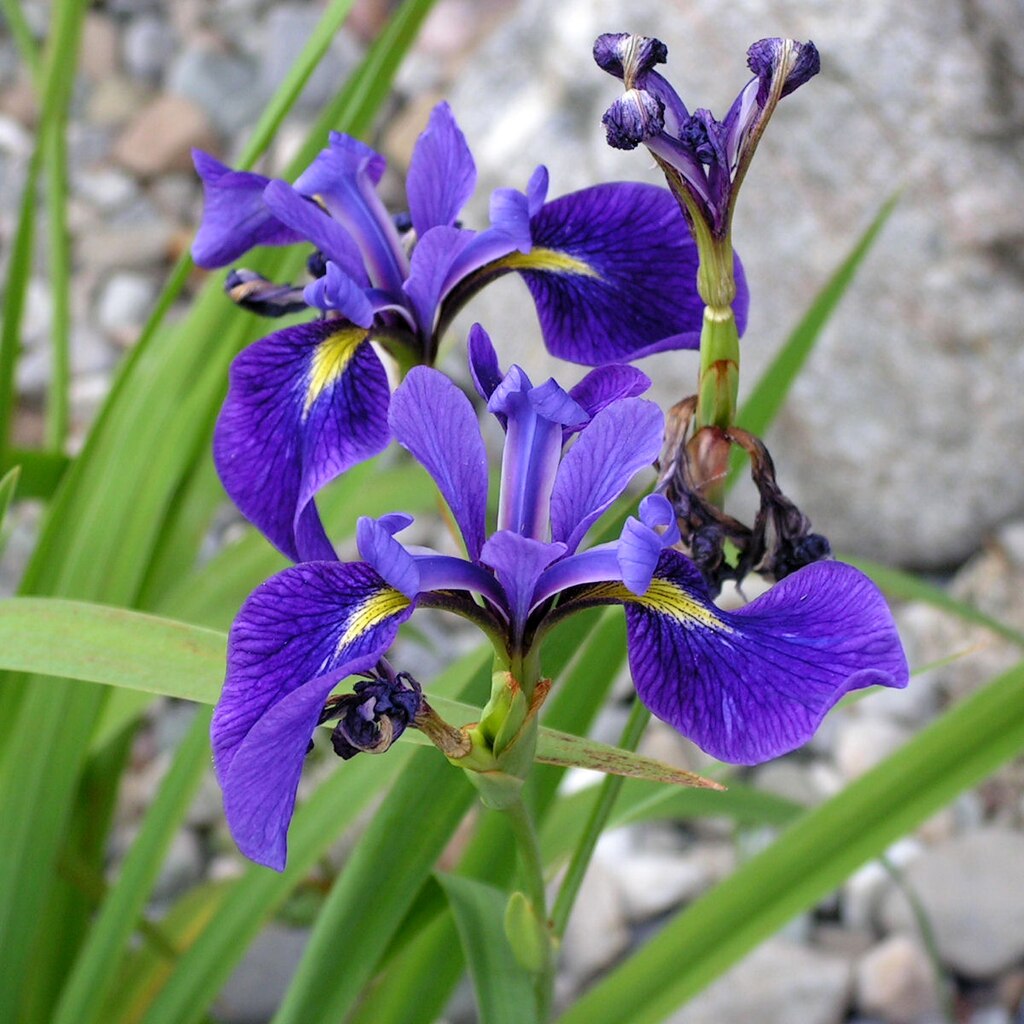
The Blue Flag Iris is known for its striking blue flowers and its ability to thrive in wet conditions. It is an excellent choice for rain gardens because it absorbs excess water and helps prevent erosion. This perennial grows well in shallow ponds or boggy areas, making it a great addition to moist landscapes. Its roots can filter rainwater, improving soil quality while providing beauty and habitat for pollinators.
In addition to its flood-absorbing qualities, the Blue Flag Iris attracts bees and butterflies, enhancing your garden’s biodiversity. It can reach up to 3 feet tall, with vibrant blooms in late spring to early summer. This plant thrives in full sun to partial shade, and its deep root system helps retain moisture. It is a low-maintenance choice for gardeners looking to create an eco-friendly space.
Swamp Milkweed (Asclepias incarnata)
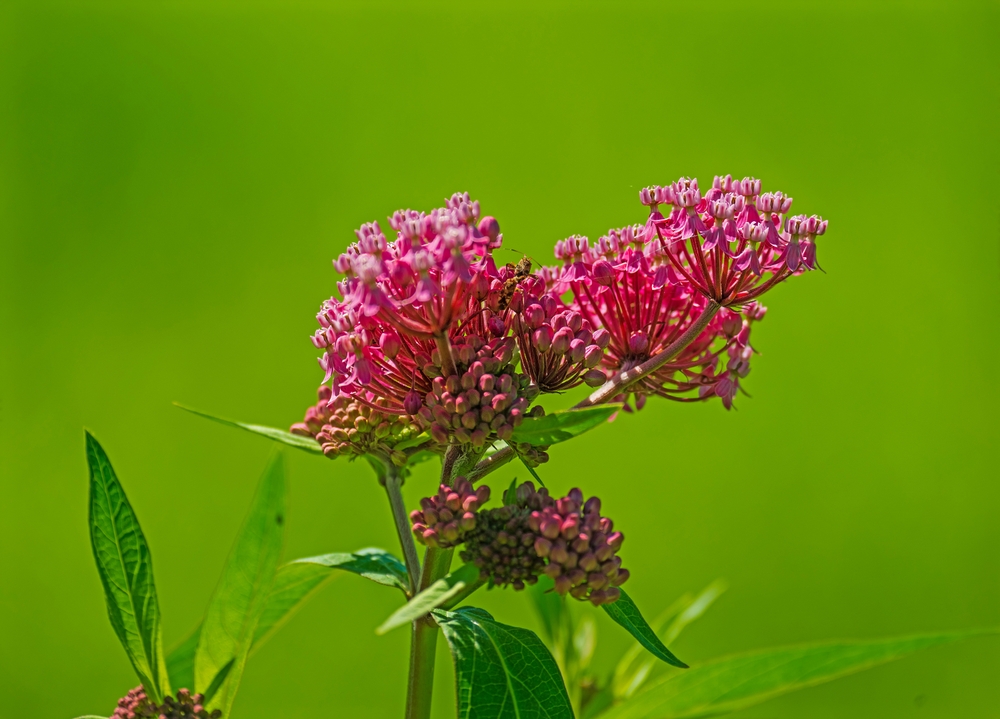
Swamp Milkweed is a perennial plant that tolerates wet soil and helps manage stormwater runoff. Its large clusters of pink flowers not only enhance the garden’s appearance but also attract pollinators like bees and butterflies. The plant’s deep roots absorb rainwater, keeping the surrounding soil moist and helping to reduce flooding. Swamp Milkweed is perfect for creating a lush, water-efficient garden.
This hardy plant can grow up to 4 feet tall, making it an eye-catching addition to rain gardens. It prefers full sun and moist soil, making it ideal for low-lying areas that tend to hold water. Swamp Milkweed is a favorite of Monarch butterflies, providing both nectar and habitat. With its attractive flowers and flood-absorbing abilities, it is a must-have in your garden.
Golden Cress (Lepidium virginicum)
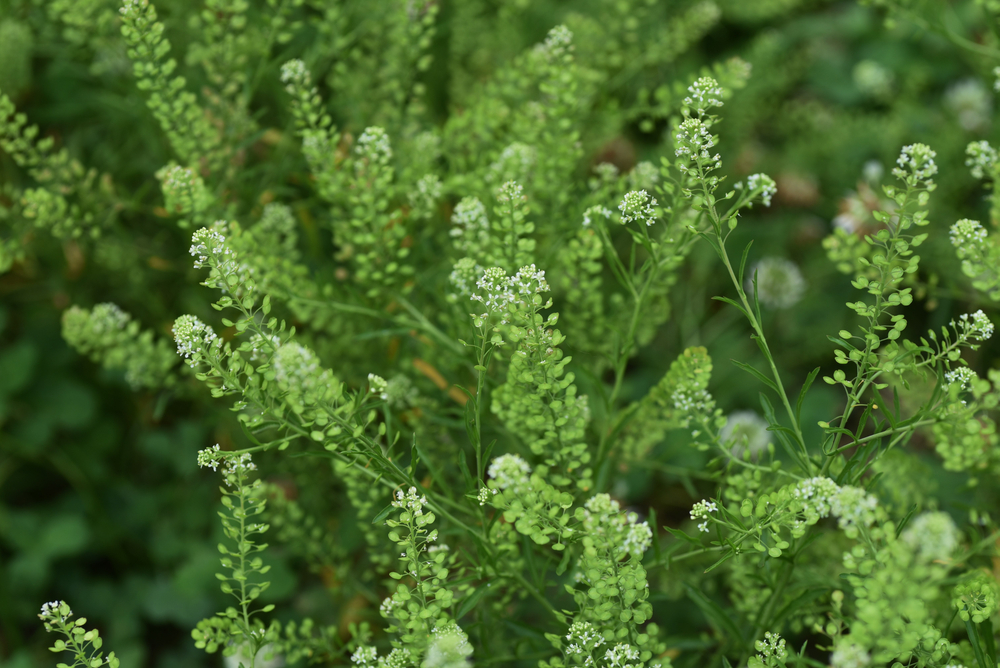
Golden Cress, also known as Virginia Pepperweed, is a versatile plant that thrives in moist environments. It is known for its ability to absorb large amounts of water, making it an excellent choice for rain gardens. The plant features small, white to pale yellow flowers that bloom in late spring to summer, offering both visual appeal and water absorption. Its shallow roots quickly soak up rainwater, helping to prevent runoff.
Golden Cress grows easily in a range of soils and can tolerate both sunny and partially shaded conditions. It typically reaches a height of 1 to 2 feet, which makes it suitable for planting in the middle or front sections of a rain garden. This plant is also drought-tolerant once established, ensuring it remains beneficial even in drier periods. Its water-retentive properties make it an essential part of any rain garden.
Soft Rush (Juncus effusus)
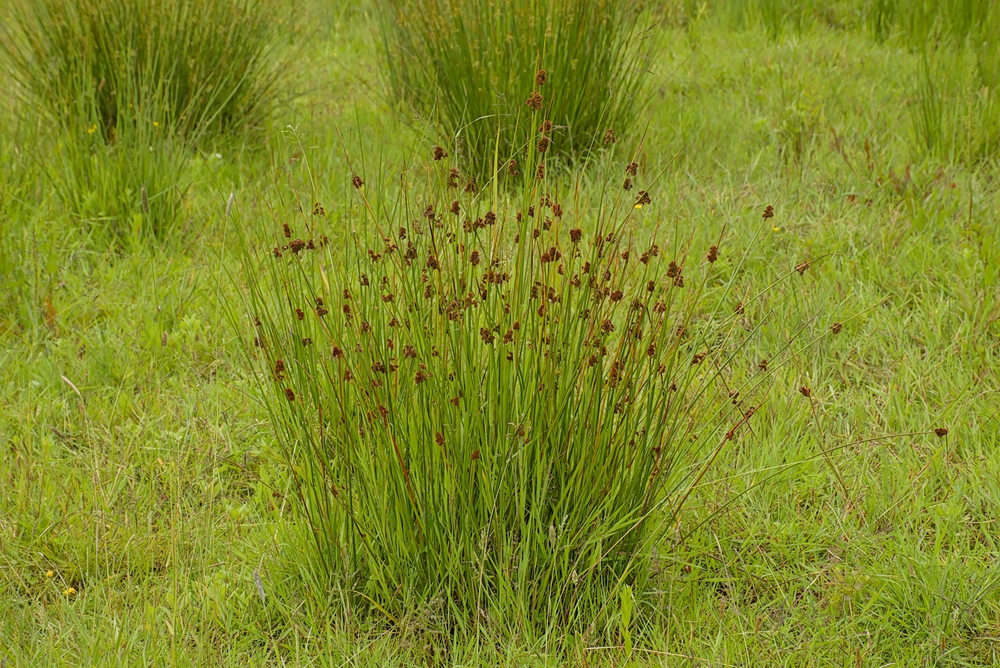
Soft Rush is a perennial grass that thrives in moist, low-lying areas and is an excellent addition to rain gardens. It absorbs excess water through its dense root system, which helps to prevent flooding and erosion. This plant features tall, slender stems that form clumps, adding texture to your garden. It grows well in both full sun and partial shade, making it adaptable to a variety of garden environments.
Soft Rush is often used in wetland restoration projects due to its ability to filter and retain rainwater. It can grow up to 4 feet tall and is known for its resilience in wet conditions. Once established, it requires little maintenance and is a great option for waterlogged areas. Its ability to filter pollutants from rainwater is an added benefit for maintaining a healthy garden.
Bluebell (Mertensia virginica)
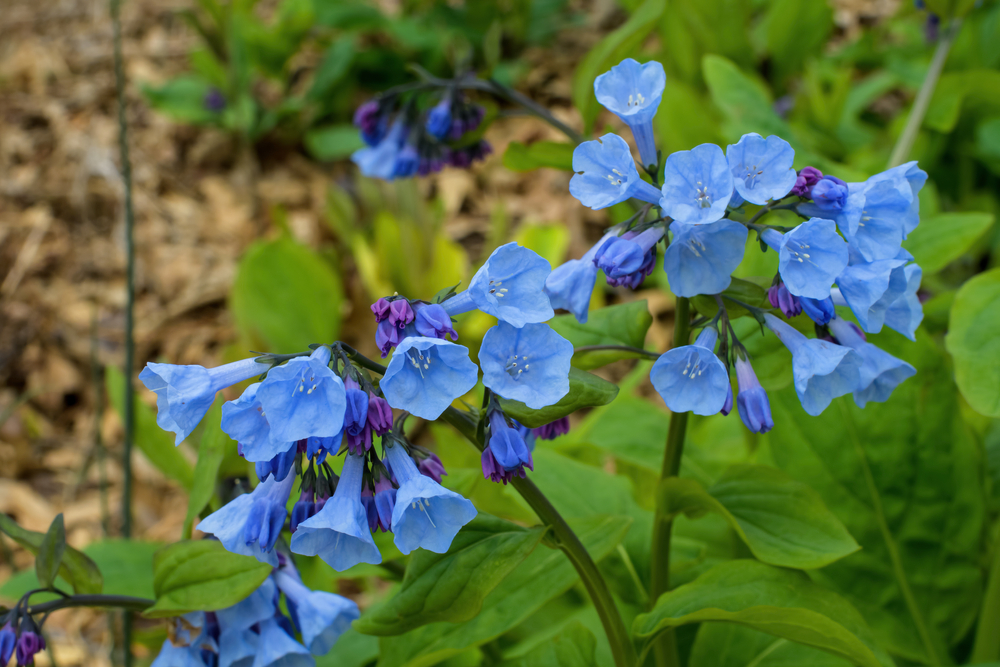
Bluebell is a charming perennial that flourishes in moist, shaded areas, making it a great choice for rain gardens. This plant has broad, soft leaves that help retain moisture, absorbing rainwater effectively. It produces clusters of delicate blue flowers in the spring, creating a lovely contrast in any garden. Its roots help to manage excess water, preventing soil erosion and promoting a healthy, balanced ecosystem.
Bluebells are particularly suited for gardens with rich, well-drained, yet consistently moist soil. They grow best in partial to full shade, making them ideal for shady corners of your garden that receive limited sunlight. The plant grows up to 12 inches tall and forms dense clumps, creating a lush, vibrant ground cover. Once established, Bluebells are relatively low-maintenance and are a beautiful addition to your rain garden.
Joe Pye Weed (Eutrochium purpureum)
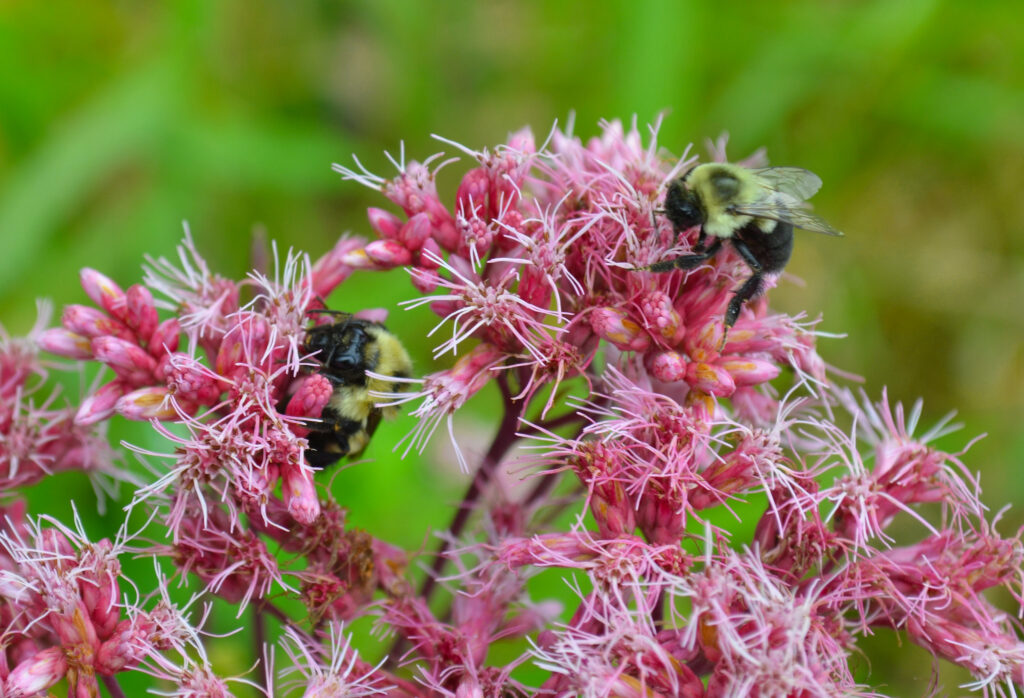
Joe Pye Weed is a tall, native perennial that thrives in wet soil and adds beauty to rain gardens. Its large, pinkish-purple flower clusters bloom in late summer and early fall, attracting butterflies and other pollinators. This plant is ideal for absorbing rainwater, as its deep roots help soak up excess moisture while preventing soil erosion. Joe Pye Weed can tolerate a variety of soil types, making it a versatile option for waterlogged areas.
This plant grows up to 7 feet tall, adding vertical interest to your garden. Joe Pye Weed prefers full sun or partial shade and requires consistently moist soil to thrive. It is a great option for the back of your rain garden or as a tall backdrop. Once established, it is drought-tolerant and can handle fluctuating moisture levels, making it an adaptable choice for any garden setting.
Creeping Jenny (Lysimachia nummularia)
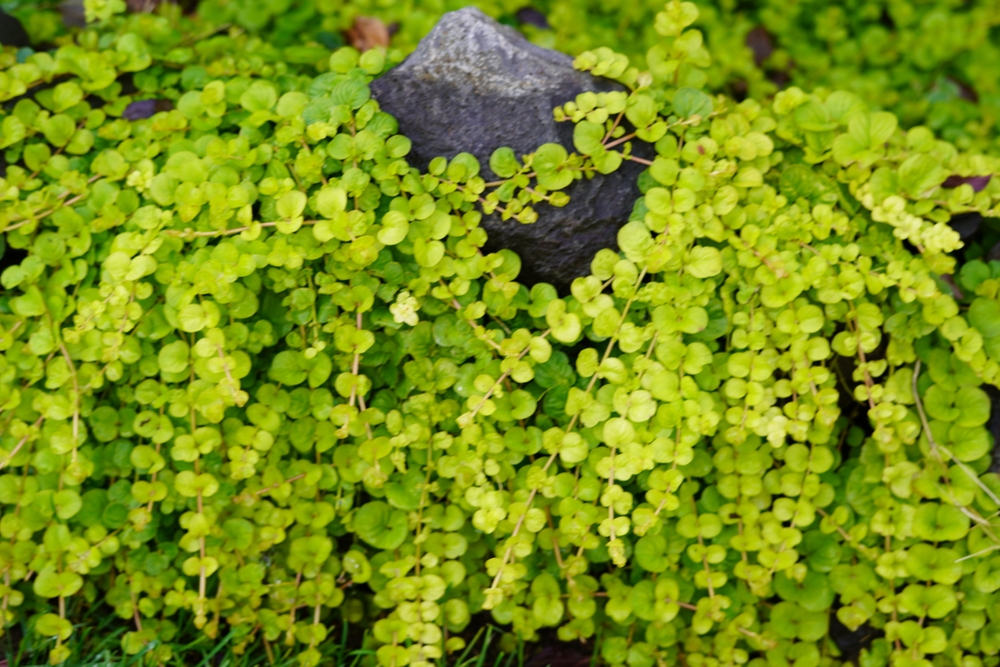
Creeping Jenny is a fast-growing ground cover that excels in wet, poorly-drained soil, making it perfect for rain gardens. It forms dense mats of bright green foliage, which helps absorb water and prevents runoff. During the summer months, Creeping Jenny produces small yellow flowers that add a pop of color to your garden. Its spreading growth habit helps reduce erosion and maintain a healthy, moist environment.
This low-growing plant is particularly suited for shady or partially sunny areas where moisture tends to accumulate. Creeping Jenny thrives in moist soil, making it ideal for the edges of rain gardens or near water features. It can spread rapidly, so regular trimming may be needed to keep it in check. Despite its fast growth, it is easy to care for and maintains its green color throughout the growing season.
Marsh Marigold (Caltha palustris)
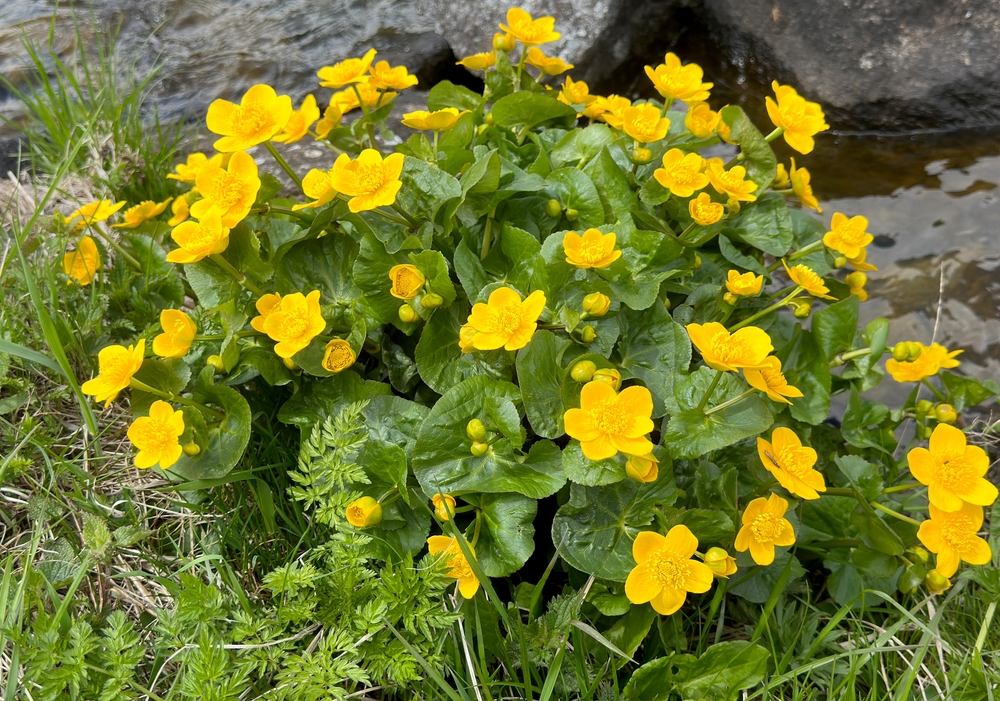
Marsh Marigold is a vibrant perennial that thrives in wet, boggy conditions and makes an excellent choice for rain gardens. It features large, glossy green leaves and cheerful yellow flowers that bloom in early spring. The plant’s ability to absorb and retain rainwater helps control moisture levels in your garden, while its deep root system prevents erosion. It is particularly effective in areas that are consistently moist or have standing water.
This plant can grow up to 1 foot tall and prefers full sun to partial shade. Marsh Marigold is ideal for the wettest spots in your rain garden, such as near ponds or streams. It does well in moist, acidic soil and can even tolerate occasional flooding. As a native plant, it also provides important habitat for local wildlife, including pollinators like bees and butterflies.
Astilbe (Astilbe spp.)
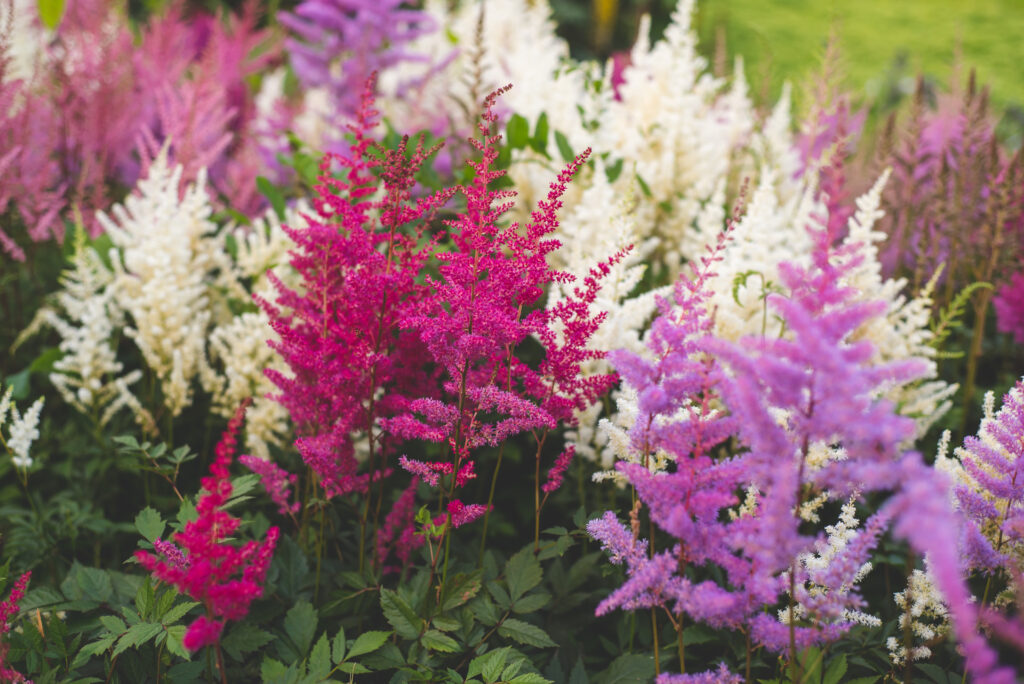
Astilbe is a perennial plant that thrives in moist, well-drained soil, making it a perfect fit for rain gardens. Known for its feathery, plume-like flowers in shades of pink, white, and red, it adds texture and color to your garden. Astilbe’s dense root system helps absorb water, making it highly effective at reducing water runoff. It also creates a lush ground cover, helping prevent soil erosion in areas with heavy rainfall.
Astilbe grows up to 3 feet tall and prefers shaded areas where it can thrive in consistently moist soil. It works well as a border or accent plant in a rain garden. Once established, Astilbe is easy to maintain, requiring only occasional watering and deadheading to maintain its beauty. This plant’s water-retentive properties and stunning flowers make it a valuable addition to any rain garden.
Japanese Iris (Iris ensata)
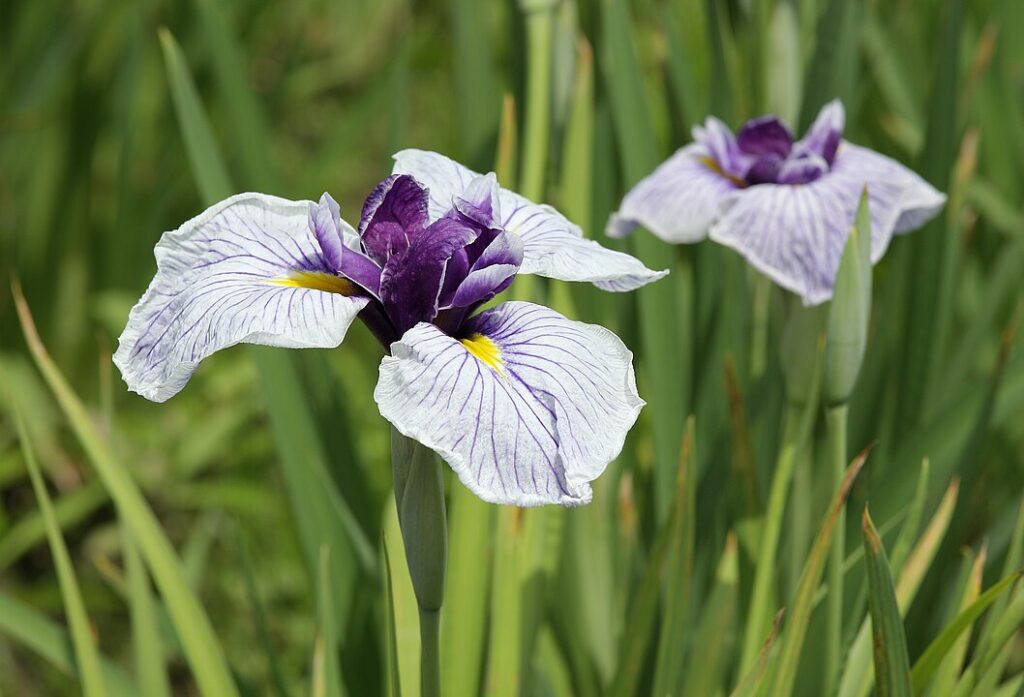
Japanese Iris is a perennial that thrives in wet, boggy conditions and offers a striking addition to any rain garden. Its large, vibrant flowers bloom in late spring to early summer, adding a burst of color to the garden. The plant’s roots absorb excess water, helping to maintain the right moisture levels in the soil while preventing erosion. Japanese Iris grows well in full sun to partial shade and can handle both moist and waterlogged areas.
This plant typically reaches 2 to 3 feet tall and works well in the middle or back of a rain garden. It prefers slightly acidic soil and can tolerate occasional flooding. Japanese Iris is a hardy and low-maintenance plant that remains attractive year-round, even when not in bloom. Its ability to thrive in moist conditions and its aesthetic appeal make it an excellent choice for your garden.
Maranta (Maranta leuconeura)
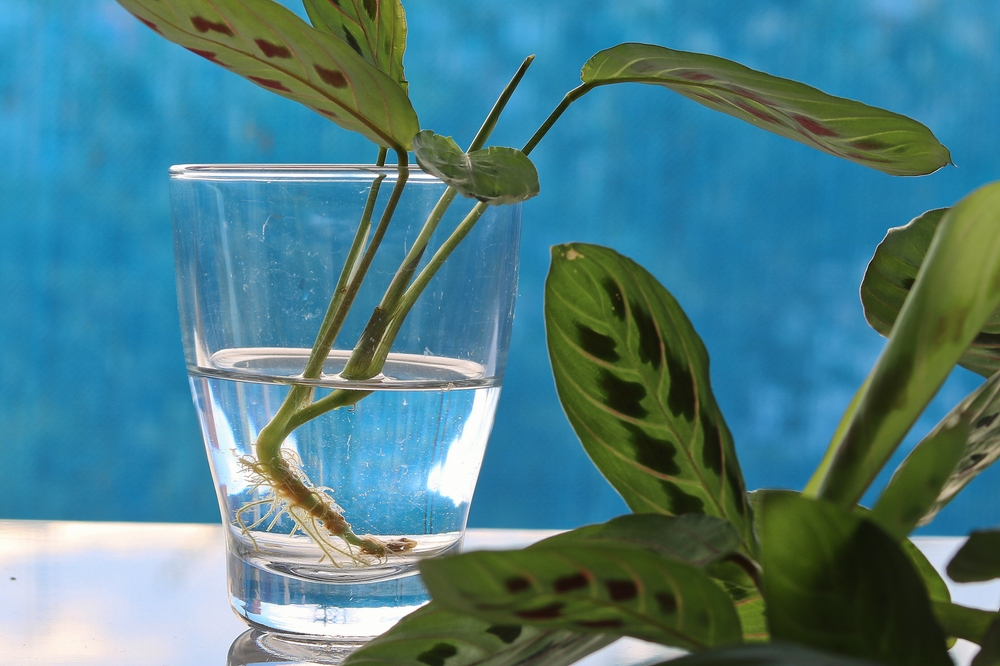
Maranta, also known as the prayer plant, thrives in humid, moist environments, making it ideal for rain gardens. Its striking foliage, marked by vibrant green leaves with reddish veins, adds color and texture to shaded areas. Maranta prefers indirect light and consistently moist soil, absorbing water through its extensive root system. It can also help filter rainwater, improving overall soil quality while providing shelter for small creatures.
This low-growing plant typically reaches 1 to 2 feet in height and is well-suited for the front or middle sections of a rain garden. Maranta is a slow-grower but requires minimal maintenance, making it a favorite among gardeners who want an attractive, easy-care plant. It thrives in humid conditions and benefits from regular watering. The unique foliage and water-absorbing abilities make it a great choice for both beginners and experienced gardeners.
Siberian Iris (Iris sibirica)
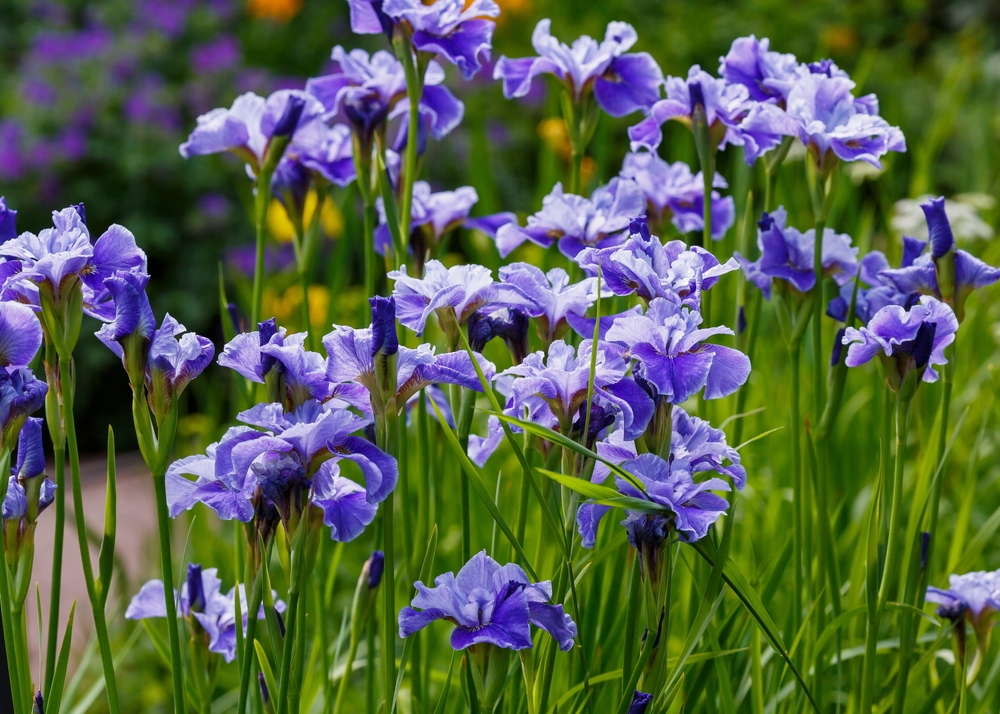
Siberian Iris is a perennial that thrives in moist, well-drained soil and adds beauty to any rain garden. It produces stunning blue to purple flowers, which bloom in late spring to early summer. This plant’s long, slender leaves and deep root system help absorb rainwater, keeping your garden healthy and balanced. Siberian Iris is tolerant of wet conditions and helps control water runoff.
This iris species can grow up to 3 feet tall, making it perfect for the middle to back of a rain garden. It is adaptable to different soil types, as long as the soil remains consistently moist. Siberian Iris prefers full sun or partial shade, making it a versatile option for various garden conditions. Its ability to absorb excess moisture while providing vibrant color makes it an essential plant for any rain garden.
Cardinal Flower (Lobelia cardinalis)

Cardinal Flower is a beautiful, moisture-loving plant that thrives in wet environments. With its tall spikes of red flowers, it adds dramatic color to your rain garden. This plant is highly effective at absorbing excess water, helping to prevent erosion and promote healthy soil. Cardinal Flower also attracts hummingbirds, adding a touch of wildlife to your garden.
It grows up to 4 feet tall and prefers partial to full sun and moist, well-drained soil. Cardinal Flower thrives in consistently wet conditions, making it ideal for the wettest spots in your rain garden. It is an easy-to-care-for plant that requires little maintenance once established. Its striking red blooms and water-absorbing qualities make it a standout in any garden.
Ferns (Various species)
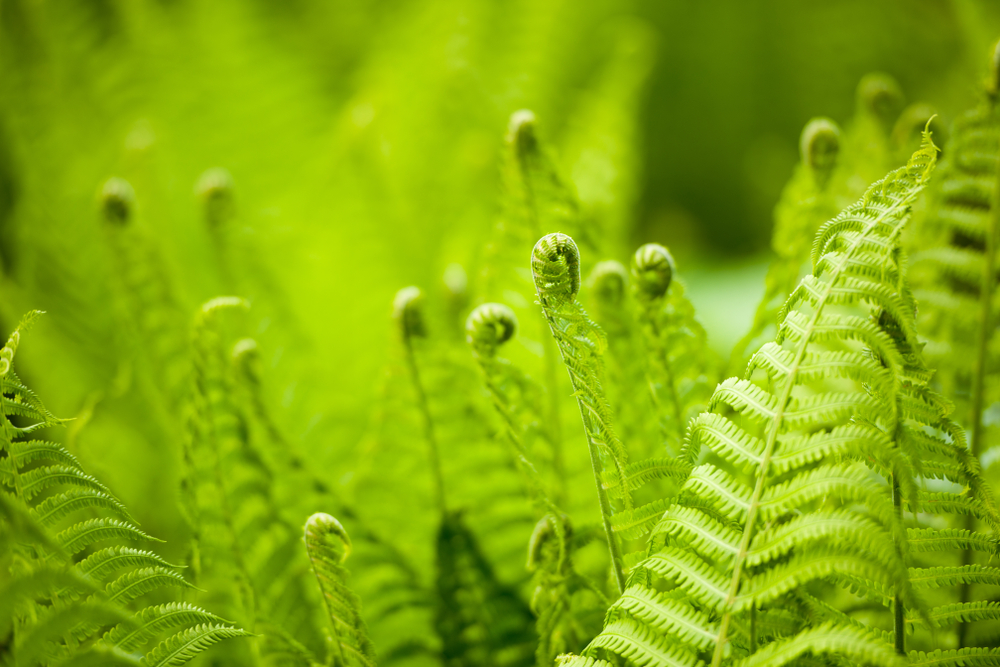
Ferns are well-suited for rain gardens due to their ability to thrive in moist, shaded conditions. Many fern species, such as Ostrich Fern and Cinnamon Fern, are excellent at absorbing excess water. These plants feature feathery, green foliage that provides both texture and visual interest in your garden. Ferns help filter rainwater while also preventing soil erosion in low-lying areas.
Ferns typically grow from 1 to 3 feet tall, making them perfect for the front or middle of your rain garden. They prefer consistently moist, well-drained soil and can tolerate varying levels of shade. With their graceful appearance and water-absorbing qualities, ferns are a low-maintenance addition to any garden. Their adaptability to different conditions makes them an excellent choice for gardeners looking to create a resilient and attractive rain garden.
This article originally appeared on Avocadu.
